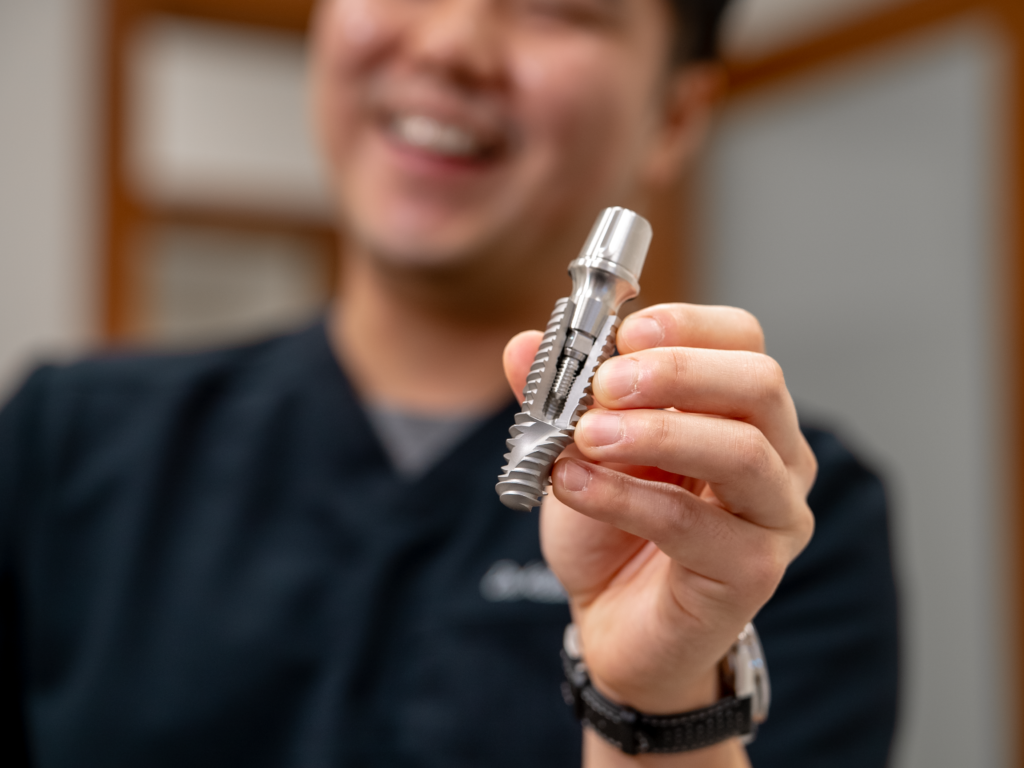
Dental implants are one of the most effective and long-lasting solutions for replacing missing teeth. They not only restore your ability to chew and speak comfortably, but also help maintain the health and structure of your jawbone. But did you know that not everyone is immediately ready for a dental implant?For some patients, bone grafting is a necessary step before they can move forward with implant treatment.
Let’s break down what bone grafting is, why you might need it, and how it prepares your mouth for a healthy, successful dental implant.
Why Do Some Patients Need Bone Grafting?
To understand the purpose of bone grafting, it helps to first understand how dental implants work.
A dental implant involves placing a small titanium post into the jawbone, where it serves as a replacement root for the missing tooth. Over time, your natural bone fuses with the implant in a process called osseointegration, creating a strong, stable foundation for a crown, bridge, or denture.
For this process to work, though, your jawbone must be healthy and thick enough to support the implant. If it’s not, the implant may fail—or may not be able to be placed at all.
That’s where bone grafting comes in.
What Is Bone Grafting?
Bone grafting is a minor surgical procedure that helps rebuild or strengthen bone in areas where it’s become thin or damaged. This is often due to:
•Tooth loss over time
•Injury or trauma
•Natural bone loss due to aging
The goal is to create a strong, stable base in your jaw where the implant can eventually be placed.
Types of Bone Grafts
There are several types of bone graft materials your dentist or oral surgeon may use:
•Allograft – Bone from a human donor (often from a tissue bank)
•Autograft – Bone taken from your own body (typically the back of your jaw or from your extracted tooth)
•Alloplast – Synthetic material made from calcium, phosphorus, and other minerals
•Xenograft – Bone taken from an animal, typically a cow or horse
The choice of graft depends on your individual needs, your health, and your dentist’s recommendation.
What to Expect During the Bone Grafting Procedure
Bone grafting is usually performed right in the dental office under local anesthesia. You may also be offered IV sedation to help you relax during the procedure.
Here’s a general overview of what happens:
1.A small incision is made in your gum to expose the jawbone.
2.The bone grafting material is carefully placed into the area where more bone is needed.
3.The area is then closed and allowed to heal over the next few months.
While it adds some time to the implant process, bone grafting is an essential step for patients who want the best long-term results from their dental implants.
Healing Time and Next Steps
Healing from a bone graft usually takes a few months, during which the grafted bone fuses with your natural jawbone. Once healed, you’ll be ready for the next phase: implant placement.
Your dentist will monitor your healing with periodic X-rays or 3D scans to ensure everything is progressing properly.
Ready to Explore Your Options?
If you’ve been told you’re not a candidate for dental implants because of bone loss, don’t worry—bone grafting may be the solution that gets you back on track.
Schedule a consultation with our experienced team to find out if bone grafting is right for you. We’ll walk you through every step of the process and help you restore your smile with confidence.
Call us today at 217-352-4646
Or book online through our convenient scheduling tool.

